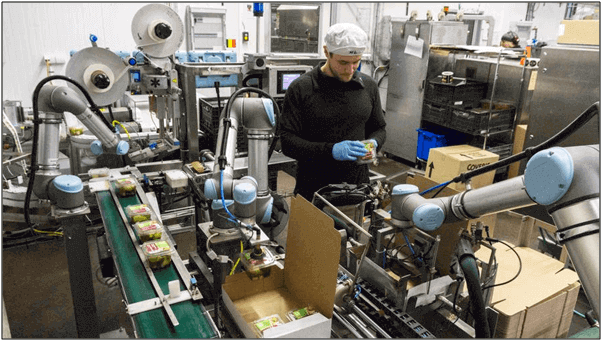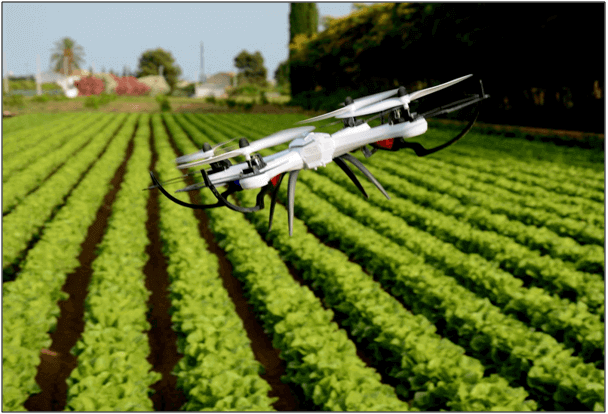An annual estimated 30% of food is wastage globally, which is about 1.3 billion tonnes costing US$ 100 Billion yearly. With a projected population increase to 9.7 billion in 2050 from the current 7.7 Billion, the world food supply is certainly straining.
Global food borne disease is also estimated to result in 1.2 million deaths yearly with a report in 1996 putting the losses in the US alone ( medical costs and value of lives lost) to range between the US $6.5 billion to $34.9 billion; and in England and Wales, UK £300-700 million annually. All these factors are accelerating the need for a better, more economical and efficient food supply chain.
The Food Supply Chain can be broadly classified into 5 stages as shown:

Table of Contents
The Inadequacies of the Food Chain
The food chain’s inadequacies can be broadly classified into these categories:-
• Predictability – be it weather to consumer preferences, unpredictability causes uncertainty in supply
• Food Loss and Wastage – Uncontrolled losses from farm to consumer
• Manpower – the lack of trained labour from farmhands, to retail cashiers
• Critical information loss thereby limiting the ability to track, trace, solve and prevent food incidents
• Increasing demand by both consumers and authorities for transparency and traceability
• The ability to increase yields without any corresponding increase in resources like land in farms, food produced per kg of raw materials, etc. to meet the growing demand
• Cost pressure – the demand by end-users to lower or maintain cost ranging to raw material to finished goods
Internet of Things (IoT) Technology
The IoT is a system of interrelated computing devices, mechanical and digital machines, objects, animals or people that are provided with unique identifiers (UIDs) and the ability to transfer data over a network without requiring human-to-human or human-to-computer interaction.
It allows the capturing of live data remotely in a secure and trusted format continuously such that processes can be monitored 24/7. Thus, constant comparisons to control parameters can be done and if the deviation is detected, timely intervention can be executed and thereby preventing unnecessarily lost.

The data are also being used for higher function systems so that end-user can make a better-informed decision on the next course of action or planning for the future, thereby increasing efficiency, lowering lost and maximizing the returns of resource invested.
A good example of this is in farms whereby using a combination of Drones, IoT enabled sensors and a software solution. A farmer can then study the soil and weather condition so that he can plan his next crop rotation.
In retail, IoT can also help to capture data of products moving off the shelves so that stores can plan their buys and not overstock, especially in perishables so as to minimize waste and maximize profits. Currently, stores in the US like Walmart and Amazon Go are testing out this solution and results are encouraging.
Cobotics And Other Automation
A cobot can be described as an apparatus and method for direct physical interaction between a person and a general-purpose manipulator controlled by a computer. Automation (and progressively moving towards Cobots) has been able to reduce physical strain and accidental injuries while making human operators available for qualitatively higher tasks. It frees up workers from repetitive and dangerous or unpleasant tasks in harsh environments.

A classic illustration of this in the food processor is showcased in the adoption by Axium Foods in the US. As quoted by the President, Mr. Jerry Stokely, “We have deployed these robots in several unique applications. In each application, the robot is the center of the total work cell performing either task at a higher speed than humans or tasks that, over time, lead to repetitive trauma injuries, such as carpal tunnel syndrome.”
Georgia Tech Research Institute (GTRI) is currently carrying research on the Intelligent Cutting and Deboning System (ICDS), taps into the senses of sight and touch for processing poultry. Increases in yield for every chicken process can translate to substantial profits since, by GTRI estimates, every 1% loss of breast meat represents about $1.5 million to each of Georgia’s 20 poultry processing plants.
Drones Technology
Drones are increasingly being used in many applications across the Food Supply Chain. Already proven as a successful disruptor in farms where they are used from monitoring crops and herds remotely to helping to take samples of soil to study its condition, it is now being used in other areas such as regulatory inspection of a vast track of agriculture to ensure laws are not broken and last-mile deliveries.
The usefulness of drones as a proven technology disruptor is so successful that now they are being expanded into other areas. For instance, there are trails across US of using a drone, with a combination of RFID tags, for the aerial inventory of large warehouses. Drones are also being piloted in processing plants as an inspection vehicle tough to reach places that are essential to a large scale processing plant.

Blockchain Technology
Blockchain is a distributed ledger technology (DLT) where alterations are not permitted once data is logged, becoming a trusted source of information. It allows proofing product provenance and implementing track-and-trace of products through the supply chain. It enables efficiency, transparency, and accountability among participating actors. Better and more reliable data can help optimize business decisions and reach higher standards for production, efficiency and sustainability. As data is organized and store in real-time, it also cuts time in retrieval of useful data and cost tremendously.
The full content is only visible to SIPMM members
Already a member? Please Login to continue reading.
References
Alvin Khoo, ADLSM.(2019). “Emerging Technology for Application in the Agri-Food Sector” Retrieved from SIPMM: https://publication.sipmm.edu.sg/emerging-technology-application-agri-food-sector, accessed on 22/06/2019.
Christine Leong Managing Director – Global Blockchain Identity Lead (2019) “Report: Tracing the supply chain”. Retrieved from https://www.accenture.com/us-en/insights/blockchain/food-traceability, accessed on 22/06/2019.
Food and Agriculture Organization of the United Nations. (2019). “Key facts on food loss and waste you should know”. Retrieved from http://www.fao.org/save-food/resources/keyfindings/en, accessed on 22/06/2019.
Karin Wang Huijuan, ADPSM. (2019). “Blockchain for Visibility in the Food Supply Chain” Retrieved from SIPMM: https://publication.sipmm.edu.sg/blockchain-visibility-food-supply-chain, accessed on 22/06/2019.
Linda L. Leake, (2016) “Robots Help Boost Food Chain Productivity”. Retrieved from
https://www.foodqualityandsafety.com/article/robots-help-boost-food-chain-productivity/, accessed on 22/06/2019.
Margaret Rouse, (2019) “IoT analytics guide: Understanding Internet of Things data” Retrieved from https://internetofthingsagenda.techtarget.com/definition/Internet-of-Things-IoT, accessed on 22/06/2019
Michael de Lagarde.(2018). “How drones can manage the food supply chain and tell you if what you eat is sustainable”. Retrieved from https://europeansting.com/2018/09/25/how-drones-can-manage-the-food-supply-chain-and-tell-you-if-what-you-eat-is-sustainable/, access on 22/06/2019.
Stephen D Porter and Dave S Reay, (2015) “Addressing food supply chain and consumption inefficiencies: potential for climate change mitigation” Retrieved from https://www.researchgate.net/publication/277609550_Addressing_food_supply_chain_and_consumption_inefficiencies_potential_for_climate_change_mitigation, accessed on 21/06/2019.
Steve Banker, (2015) “Blockchain Gains Traction in the Food Supply Chain” Retrieved from
https://www.forbes.com/sites/stevebanker/2018/07/25/blockchain-gains-traction-in-the-food-supply-chain/#1c45d3c01cf9, accessed on 22/06/2019.
World Health Organization (2019) “Food Safety” factsheet Retrieved from
https://www.who.int/news-room/fact-sheets/detail/food-safety, accessed on 22/06/2019.

